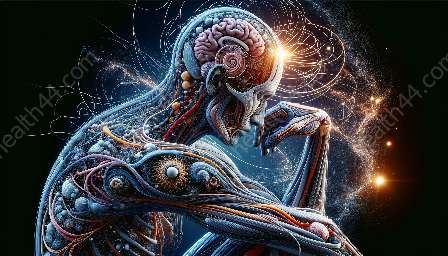As a critical component of health education and medical training, clinical anatomy provides a comprehensive understanding of the structure and function of the human body. This topic cluster delves into the intricacies of clinical anatomy, exploring its relevance to both medical professionals and students.
The Importance of Clinical Anatomy
Clinical anatomy is essential for health professionals as it forms the foundation of medical practice. Understanding the anatomical structure of the human body is crucial for accurate diagnosis, treatment, and surgical procedures. It allows medical practitioners to comprehend the interconnectedness of the body's systems, aiding in the holistic approach to patient care.
Moreover, a thorough understanding of clinical anatomy is fundamental in medical training. It equips future healthcare professionals with the knowledge required to make informed decisions and provide effective patient care. From medical students to experienced practitioners, a strong grasp of clinical anatomy is vital throughout a healthcare career.
Exploring the Components of Clinical Anatomy
The study of clinical anatomy encompasses various components, including gross anatomy, histology, embryology, and neuroanatomy. Gross anatomy focuses on the macroscopic structure of the body, examining organs, tissues, and systems, while histology delves into the microscopic structure of tissues at a cellular level.
Embryology plays a crucial role in understanding the development of human structures from conception to birth, providing insights into the formation of organs and systems. Neuroanatomy, on the other hand, concentrates on the intricate organization of the nervous system, including the brain, spinal cord, and peripheral nerves.
Each component contributes to a comprehensive understanding of the human body, enabling healthcare professionals to interpret clinical presentations, perform accurate physical examinations, and interpret diagnostic findings.
Application of Clinical Anatomy in Medical Education
In the realm of medical education, clinical anatomy serves as the cornerstone of training. Medical students engage in hands-on learning through cadaveric dissection, anatomical models, and imaging techniques, gaining a deep appreciation for the three-dimensional structure of the human body.
The integration of clinical anatomy with medical curriculum enhances students' ability to correlate theoretical knowledge with real-life clinical scenarios. It fosters critical thinking and problem-solving skills, enabling students to apply anatomical concepts to diagnose and manage patient cases effectively.
Furthermore, the use of advanced technologies such as virtual reality and augmented reality has revolutionized anatomical education, offering immersive experiences that simulate surgical procedures and anatomical structures. These innovative approaches to teaching clinical anatomy enhance students' spatial awareness and surgical dexterity, preparing them for the complexities of modern healthcare practice.
Relevance of Clinical Anatomy in Health Education
Beyond the confines of medical training, clinical anatomy holds significance in broader health education initiatives. Understanding the human body's anatomy is fundamental for promoting public health awareness, enabling individuals to comprehend the physiological impact of lifestyle choices, diseases, and medical interventions.
Health educators utilize clinical anatomy to elucidate the implications of factors such as nutrition, exercise, and preventive healthcare on the body's structure and function. By imparting anatomical knowledge, they empower individuals to make informed decisions regarding their health and well-being, fostering a proactive approach to disease prevention and management.
Furthermore, the integration of clinical anatomy in health education curricula for the general public contributes to eradicating misconceptions and promoting health literacy. It equips individuals with the knowledge necessary to interpret medical information, engage in meaningful discussions with healthcare providers, and advocate for their health needs.
Conclusion
Clinical anatomy stands as a fundamental pillar in the realms of health education and medical training, offering a profound insight into the complex structure and function of the human body. Through immersive learning experiences and application-oriented education, clinical anatomy plays a pivotal role in shaping the next generation of healthcare professionals and promoting public health awareness.


